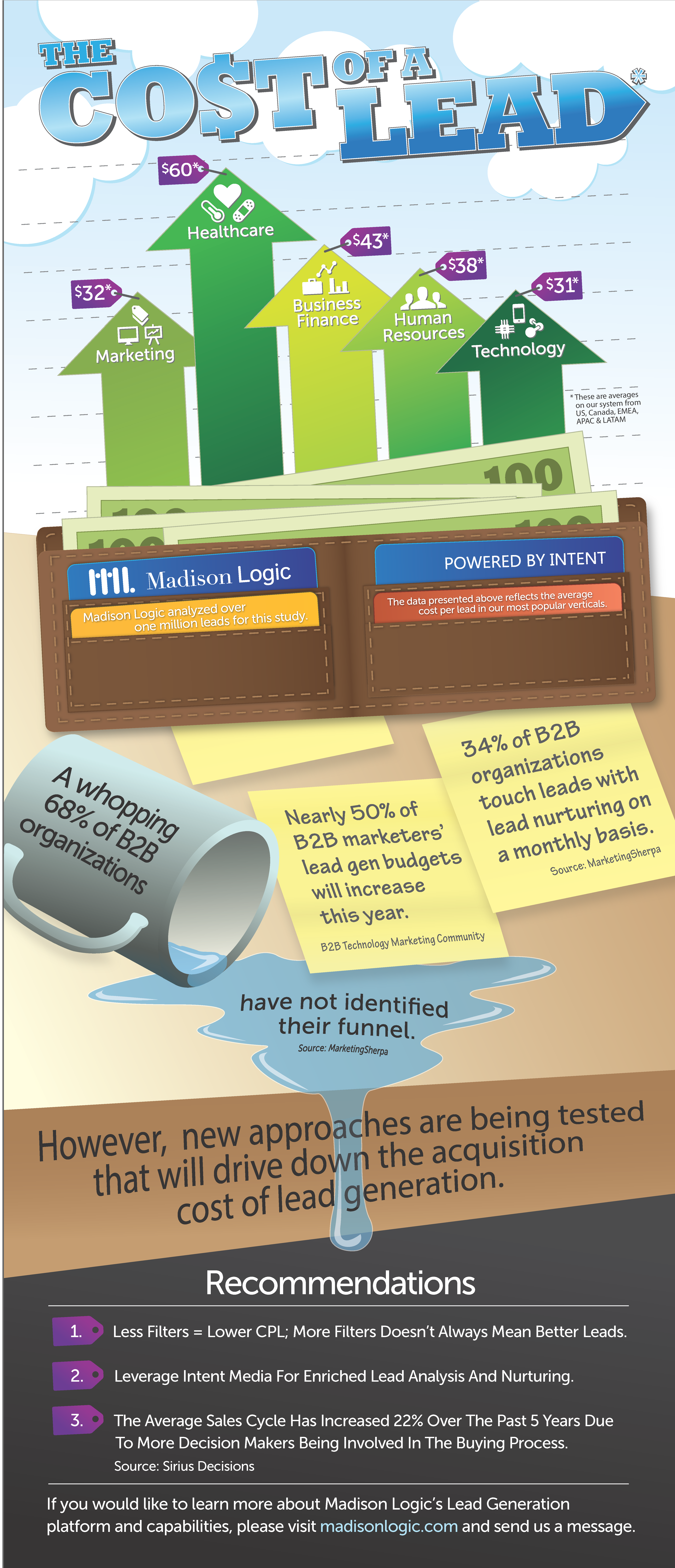One of the main goals for any B2B company is lead generation, but there’s a big difference between just bringing in leads and getting those leads to turn into customers and revenue. B2B companies vary widely in their lead generation methods; many spend money on leads that aren’t a good fit or neglect the ones that are qualified, and a surprising number haven’t even figured out their sales funnel.
When developing lead generation strategies, benchmarks and budgets, many marketers make the mistake of thinking, “if we can just identify the lead, we’re just a step away from the sale,” but the truth is there are multiple steps and touch points between identifying leads and closing the sale. The fact is, the bulk of leads die on the vine, but so many marketers continue to throw more money into generating leads versus investing in smart lead nurturing technology that actually converts.
We’re deep into 2015 budget planning now, and multiple industry analysts have predicted that B2B marketers’ lead generation budgets will increase significantly this year. So when it’s time to finalize the Lead Generation line item on your marketing budget, do you know what content syndication should cost? Do you know the average CPL in your industry or vertical for benchmarking purposes? Do you know how to make the most of that budget to generate leads that translate to real revenue? Lead generation is a line item that can either make or break your budget, and there are many factors to consider.
If you’re looking to boost conversions and revenue, increase your knowledge of efficient, effective B2B lead generation and nurturing practices that optimize your budget and minimize waste. Before you determine your lead strategy for 2015, make sure you know the facts. Here’s a handy infographic from Madison Logic to get you started. It provides a “top of funnel” average, by vertical, based on their extensive distribution platform.
